Brewing Under the Big Sky
Researching Montana craft beer is surprisingly fun… even for those who don’t consider themselves beer aficionados. For one, you can study it almost anywhere. Most communities have a tavern or restaurant that features a few Montana brews. But to truly taste the flavor of the Big Sky State, you’ll need some time and a map.
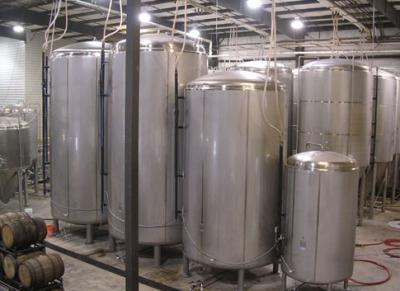
The Department of Revenue lists 20 microbreweries operating in Montana today. Most are near waterways west of the Continental Divide. The oldest and biggest of them thrive in the Missoula Valley.
German-born brew master Jurgen Knoller began Bayern Brewing there nearly 20 years ago. He says he limits production of his award-winning lagers to less than 10,000 barrels annually “so I can keep my tasting room.” According to Mike , president of BeerTrips.com (a Missoula-based company offering tours of European breweries), Knoller is using a classic Bavarian business model. Selling only in Montana, he says, “You make the most money by selling it five feet from where it was made.”
In contrast, Big Sky Brewing began operations in 1995; and in 2004—the year they established their own bottling facility near the Missoula airport—they produced more than 25,000 barrels of brew, including the ever-popular Moose Drool Brown Ale. Neal Leathers, company president, says his partnership always planned on becoming a regional brewery, and today their beers can be found across the Northern tier of the United States, from Alaska to Wisconsin. And more distributors “come knocking” every year, he says.
What this means for students of the ancient art of brew making (Montana style) is that Big Sky Brewing offers a free tasting room. It does so primarily because of Montana law, which limits taproom patrons to 48 ounces and dictates closure by 8 p.m.. While free to open when they choose, most taprooms begin serving at 4 p.m.. The cost of a craft beer in a taproom is $3-4.
Tim Bozik, president of the Montana State Brewers Association (MSBA) and owner/brew master of the eight-year-old Bitter Root Brewing Company in Hamilton says people like tasting rooms because they have “a different atmosphere than a bar or tavern. There’s real welcoming atmosphere.”
Todd Scott, the owner/brew master of the four-year old Bozeman Brewing Company, says, “I’ve had people refer to my tasting room as a bar, but it’s the furthest thing from that. Bars can have gaming, an unlimited numbers of drinks, and full beverage alcohol. Bars attract a different crowd than a tasting room.”
Sam Hoffmann, proprietor/creator of Red Lodge Ales (established in 1998), says his tasting room has “a family atmosphere where you can bring in your small kids. Virtually all Montana breweries have a healthy, eclectic, friendly following. People are happy to talk to you, and it’s a good place to hang out and sample some good beer. Taprooms are also a good tool for generating interest in your product and what you’re doing.”
However, not all Montana breweries have taprooms. If you want to sample the goods of the Billings Brewing Company (est. 1994), you’ll have to visit the nearby Montana Brewing Company, a restaurant/brewpub, or its newly attached sports bar. And to sip on the White Water Wheat from Himmelberger Brewing (also established in Billings in 1994), you must visit one of its 10 outlets, such as Pug Mahones, the Rex, or the Red Robin.
“It’s been mostly by choice,” says brew master Dennis Himmelberger, who also serves as a state legislator. “When my wife and I started, we wanted to keep the thing small. We don’t adhere to the philosophy that bigger is better. In the European markets, a lot of small towns have their resident breweries, and their product is not distributed out of the area. That has a certain appeal to me. The cool thing is you have to travel to this ‘berg to drink their brew.”
Beer trips organizer would agree. “Going back to the history of brewing, every little town in Europe had a bakery and brewery. That’s just what you did. There wasn’t global importing and exporting. Everything was local, and the beer styles grew out of what ingredients were available. In a lot of cases, even the shape of the vessels would literally change how the yeast would behave.” notes that Montana is located “in the grain belt” of the United States, same as the European countries he tours.
“Where beer comes from in Europe is based on the growing season and the climate. You can draw three strips across Europe,” he explains. “Wine and grapes come from the south, the middle is wheat and barley—or beer producing—countries, and the north is the ‘spirit’ belt, meaning vodka and such.”
Beer making is a four-to-eight hour process that demands art, science and passion, and four basic ingredients: hops, yeast, malt, and water. Any variation—such as the toasting of the grains, the quality of the barley, or the alkaline in the water—results in a different beer. Other factors include the temperature of the mash, the length of fermentation, and the aging. Generally, lagers are aged longer than ales, and dark malts produce dark beers, such as stouts, schwarzbiers, and porters.
Saxton says, It’s similar to coffee. The more you roast, the more you end up with super dark, toasted flavors. In fact, one of the darker malts is called Coffee Malt.”
To further his analogy, Saxton compares likens microbrew lovers to those who prefer strong coffee. “People often think strong coffee is bitter. Beer with a lot of ingredients…hops or malts…they think is too bitter, or too sweet, or too chewy.”
Bitterroot brewer Bozik explains that most microbrews are unfiltered, hence the full body; that the sweetness comes from the malt (“malt extract is a natural sweetener”); and that the bitter comes from hops (a “natural bittering and preservative”). Until hops were introduced into the beer-making recipe, the beverage—which was used in medieval times instead of polluted drinking water—had a short and sour shelf life. This was particularly a problem for the English colonies in India. The answer was to increase the hops and alcohol content of the beer. The result is a style called India Pale Ale (IPA).
Bozik says simply, “Bitter is good.”
Evidently, more people than ever agree. According to the Brewers Association, “the craft segment of the US beer market (which includes brewpubs, microbreweries, and specialty brewers)” in 2004 “sold more new barrels of beer than the much larger import segment of the beer market.” Also in 2004, estimates Bozik, Montana brewers pumped some $10 million into the state’s economy.
Brewer Himmelberger says, “It’s nice to have all these choices again for Americans to enjoy and experience. There’s definitely a huge difference between a local microbrew and, say, a Sam Adams, which makes a fine beer but is one of the larger contract microbrews. We encourage people to drink the local product. It helps the local economy, and it’s actually good for you. Unlike the large produced beers, we don’t put in additives. There’s no need to put in preservatives. It’s an all-natural product.”
Increasingly, beer is a completely Made in Montana product as well. Bozik explains that he’s buying malt from a new facility in Great Falls; he expects many of the smaller outfits have also made the switch. Big Sky Brewing may also change vendors when their current contracts expire. So, soon only the hops will be coming from out of state.
This brings us to the water. Like its competitors, Blackfoot River Brewing in Helena (est. 1998) touts the quality of Montana water as a crucial ingredient. Most local breweries use municipal supplies, but several say they chose their locations partly because of the nearby waterways. Situated on the east shore, the Flathead Lake Brewery won two medals in the 2006 World Beer Cup six months after it opened. Yellowstone Valley Brewing Company in Billings (est. 1996) credits its river for award-winning brews, while John Ballantyne, the owner/brewer of Harvest Moon Brewery in Belt, compares the Madison aquifer to a classic beer-making region in England.
But more than choosing quality ingredients, Ballantyne says he most enjoys the process. “With craft beer or a craft-sized brewery, things are still kind of hands on,” he says. “You’ve got to stand over the boiling kettle and throw the hops in that you just weighed out on a scale instead of sitting in a room at a computer, using a mouse to open or close valves.”
“Montana has a good solid brewing tradition,” says, noting that Montana’s first brewer was recorded in 1863, and that his company’s goal is to encourage people wherever they live “to visit the places where beer grew up” as a way of learning about the local history, culture, art and architecture.
One way to experience a variety of Montana brews in one place is to attend a local festival (see sidebar). Take Missoula’s Kettlehouse, for example. It offers a dark ale called Old Bong Water and a lighter one called Fresh Bong Water. Or, if you’re looking for an award-winning porter, try the Pigs Ass from Harvest Moon.
“That was one of our first beers,” says brewer Ballantyne. “We were a brand new company in 1997 and we had nothing to lose. When we first started out we had a gal with some hogs who would come and get the mash. Brewing mash has some nutritional value left in it, and so that’s how we came up with the name Pigs Ass Porter.”
Brewer Scott calls Pigs Ass “a real easy-drinking porter.” He describes Moose Drool as a very easy-drinking, malty brown ale,” and says his Bozone Amber is “designed to be a quaffable beer, or a session be -- something you can sit and drink several of during one session.”
He says all of the Montana breweries “have a primary beer that sells, and then you can get creative and make the wacky stuff” that can make its way to the taproom as a seasonal or specialty beer.
Bottom line, brewers agree, a risqué name is an excellent marketing tool. Ballantyne says that nine out of 10 patrons would try his Pigs Ass just for its odd name. The tenth won’t try it at all for the same reason.
“Ever since ancient times, beer makers have been trying to come up with a new gimmick,” says Saxton. “Once one village figured out the other village had customers, they were busy figuring out how to get those customers.”
Leathers admits that it’s becoming so tough for his in-house team to come up with a catchy, unused name or image (Big Sky features large animals, such as its Scapegoat Ale) that they’re calling their new bottled brew simply Big Sky IPA.
Upon hearing this news, expresses disappointment, but he quickly comes up with a Shakespearean spin. “A beer by any other name is still as sweet,” he says.”
Bozik says quality is the only thing that matters. “We know you can’t go out to dinner and drink too much these days, so we say ‘go out and have that beer, but make it a good one!’”
~ Glenda Wallace is a freelance writer who is constantly learning in western Montana.
Montana Brew Festivals
Garden City Brewfest - May 6 - Missoula - www.missouladowntown.com 406.543.4238
Billings Micro Brew Festival - June 2 - Billings - [email protected] - 406.633.2206
Dog & Grog Montana Microbrew Festival - July 21 - Virginia City - [email protected] 406.843.5700
Yellowstone River Duck Festival/Classic Car Show/ Microbrew Fest - August 12 - Forsyth - [email protected] - 406.347.5656
River’s Edge Trail – Blues & Brews - September 8, 2006 - Great Falls Convention Ctr. - www.thetrail.org - 406.788.3313
Octoberfest - October 1, 2006 - Anaconda’s Copper Village - www.anacondamt.org 406.563.2422
A Short List of Some Exceptional Montana Breweries...
Whitefish - Great Northern Brewing
Marion - Lang Brewing
Woods Bay - Flathead Lake Brewing
Polson - Glacier Brewing Company
Missoula - Bayern Brewing, Big Sky Brewing, Kettlehouse Brewing
Hamilton - Bitter Root Brewing
Belt - Harvest Moon Brewing
Helena - Blackfoot River Brewing, Lewis & Clark Brewing
Bozeman - Bozeman Brewing
Belgrade - Madison River Brewing
Livingston - Neptune’s
West Yellowstone - Wolf Pack Brewing
Red Lodge - Red Lodge Ales
Billings - Billings Brewing, Himmelberger Brewing, Yellowstone Valley Brewing
Miles City - Milestown Brewing
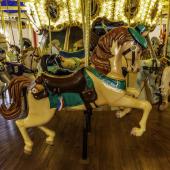
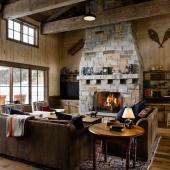
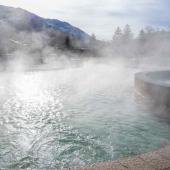
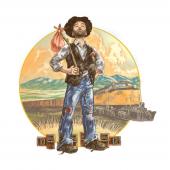

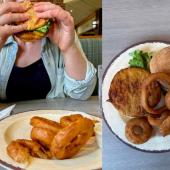





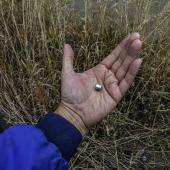
Leave a Comment Here